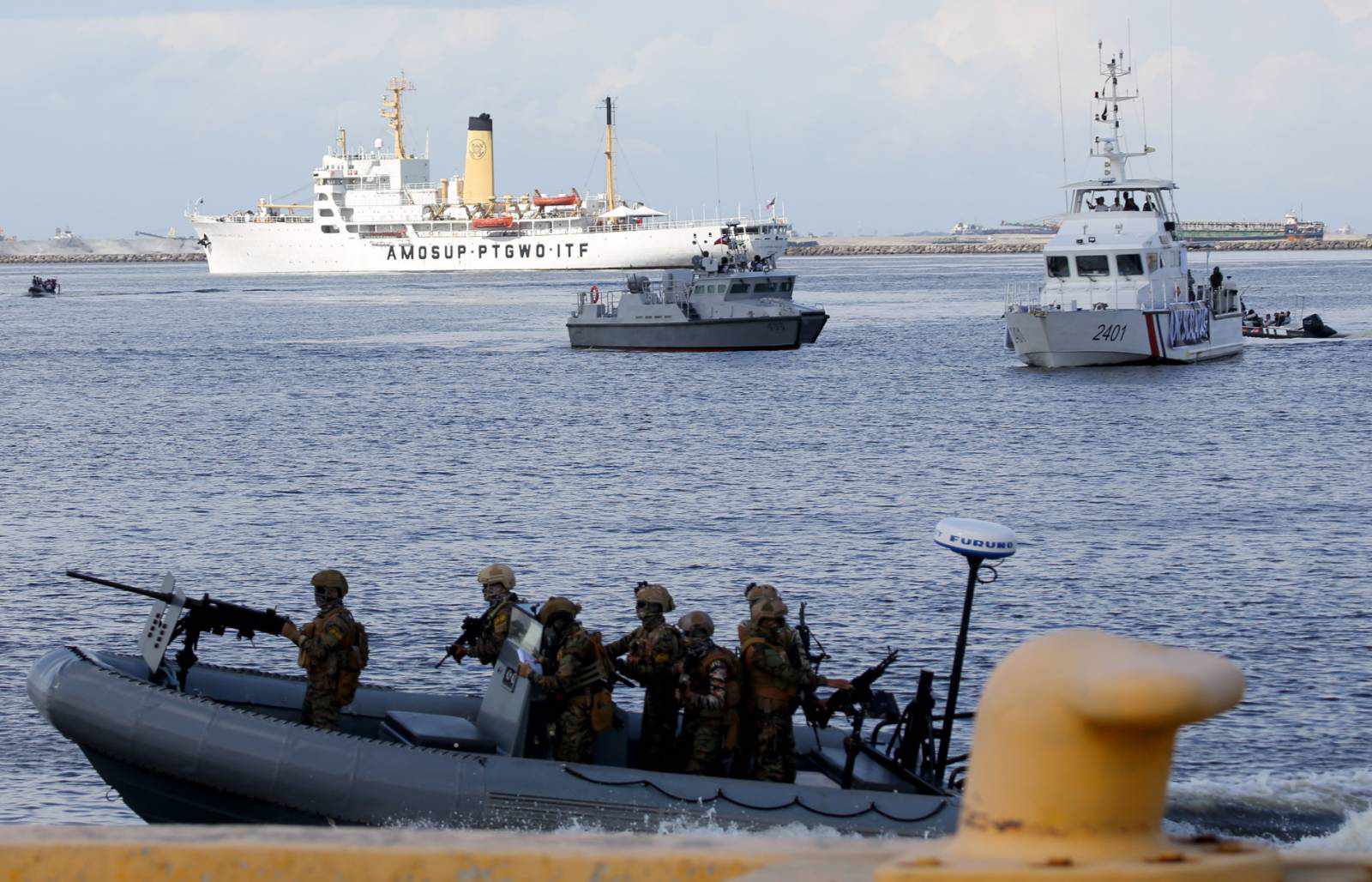Inter-agency exercise 'Alalayan' kicks off in Manila; 'not a show of force' amid tension in WPS
At A Glance
- Eleven government agencies banded together as they kicked off Exercise "Alalayan" 2023 at Manila Bay in Manila on Friday, August 11.
- Philippine Coast Guard (PCG) Vice Adm. Roy Echeverria, NCWC director, clarified that the exercise was not a show of force amid the dangerous maneuvers and water cannon attack conducted by Chinese vessels against PCG ships and supply boats from the Armed Forces of the Philippines (AFP) last week.
- Alalayan (to support), a tabletop exercise which was conceptualized three months ago, was hosted by the NCWC and co-hosted by the European Union (EU) through its Critical Maritime Routes Indo Pacific (CRIMARIO).
Eleven government agencies banded together as they kicked off Exercise “Alalayan” 2023 at Manila Bay in Manila on Friday, August 11, to test different protocols and demonstrate the capability of the National Coast Watch Center (NCWC) and its support agencies to detect, identify, and interdict maritime threats within the Philippine territory.

Philippine Coast Guard (PCG) Vice Adm. Roy Echeverria, NCWC director, clarified that the exercise was not a show of force amid the dangerous maneuvers and water cannon attack conducted by Chinese vessels against PCG ships and supply boats from the Armed Forces of the Philippines (AFP) last week.
“[The training] is not related [to the incident] but it’s always good to be prepared for any eventualities and we keep training our personnel,” Echeverria said.
“And no, this is not a show of force. It’s just an exercise to test our interoperability among the different support agencies of the NCWC,” he added.
Alalayan (to support), a tabletop exercise which was conceptualized three months ago, was hosted by the NCWC and co-hosted by the European Union (EU) through its Critical Maritime Routes Indo Pacific (CRIMARIO), a maritime capacity building initiative towards enhancing maritime domain awareness (MDA) through information sharing, capacity building and training.
The participating agencies included the NCWC, Philippine Coast Guard (PCG), Armed Forces of the Philippines Command Center (AFPCC), Bureau of Immigration (BI), Bureau of Fisheries and Aquatic Resources (BFAR), Bureau of Customs (BOC), Bureau of Quarantine (BOQ), Intelligence Service of AFP (ISAFP), Philippine Drug Enforcement Agency (PDEA), Philippine Navy (PN), and Philippine National Police – Maritime Group (PNP-MG).
Aside from enhancing the interoperability of the participating agencies, Alalayan also seeks to test the IORIS platform. IORIS refers to Indo Pacific Regional Information Sharing, a secured communications platform donated by the EU to the participants so they could conduct an interagency planning and coordination when responding to maritime incidents.
“We share information and intelligence. Before most of our agencies would keep it to themselves, now it’s good to share it to our partner-agencies because the more we get information from, the better informed we are and the better decisions we can arrive at,” Echeverria said.
“Sometimes we get information that is not of our concern, that is why we are trying to address the gaps and interlaps here. Law enforcement function is a very broad spectrum and each agency has different protocols, different doctrines, SOPs [standard operating procedures], so sometimes you find information that is not within your mandate so it’s good to pass it to the concerned agency,” he added.
Drills
During the exercise, the participants simulated a coordinated response towards a foreign vessel that was suspected of transporting illegal drugs and smuggled goods.

In this scenario, the NCWC received the intelligence report about the vessel of interest (VOI) from the US Maritime Information Fusion Intelligence Center (MIFIC) Pacific. The NCWC then forwarded the information to its support agencies.
The agencies then performed an assault operation to seize the illegal drugs onboard the VOI. They also performed other exercises such as counter-smuggling, human trafficking, and fire at sea operations.
The participants utilized different assets such as the PCG’s BRP Melchora Aquino, BRP Malapascua, BRP Boracay; a high-speed tactical watercraft from the PNP-MG; a rigid hull inflatable boat and one vessel from the Navy; and ambulance with medical personnel from BOQ.
At one point of the exercise, the PCG used water cannon but Echeverria explained this was just to demonstrate the agency’s capability to put out fire at ships.
“We always use it only during disasters at sea especially if there’s fire. That’s the only time that we use it and we don’t use it for any other reason,” he said.
Last August 5, a China Coast Guard (CCG) fired water cannon at PCG vessels and AFP indigenous boats that were supposed to bring supplies to troops stationed onboard BRP Sierra Madre in Ayungin (Second Thomas) Shoal).
“There’s really no secret message from this exercise. We want this to push through especially this time that the weather is usually rainy. It’s good to have it on a fair weather for all agencies to be able to test our different capabilities without hassle,” Echeverria said.